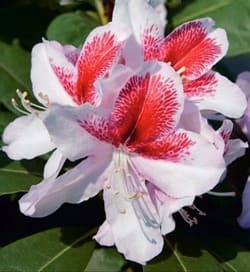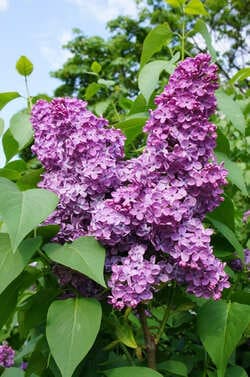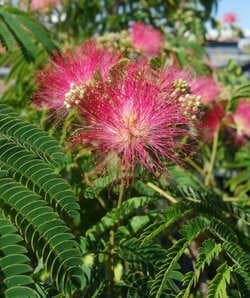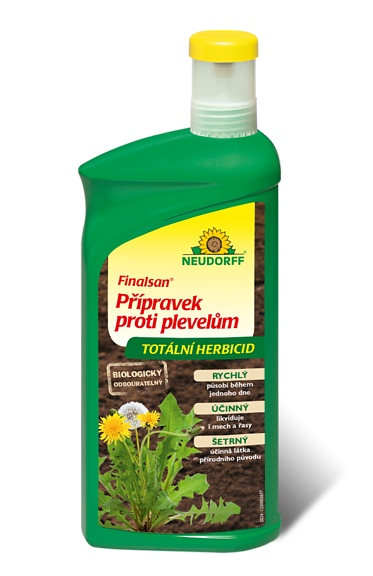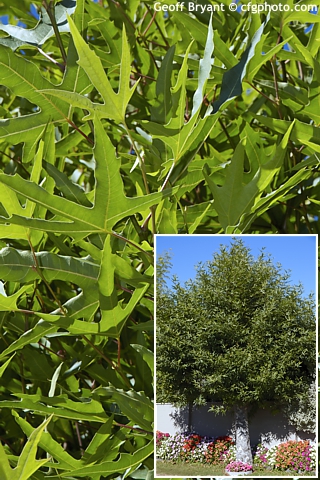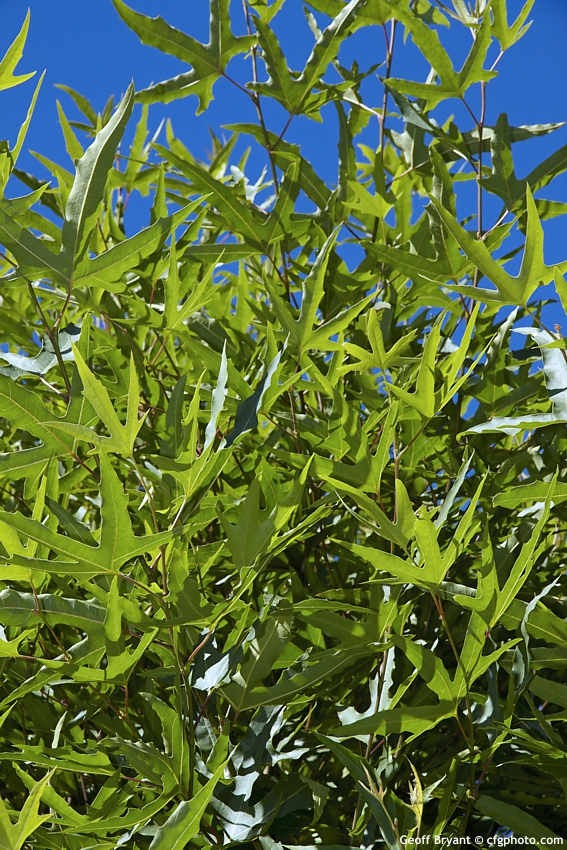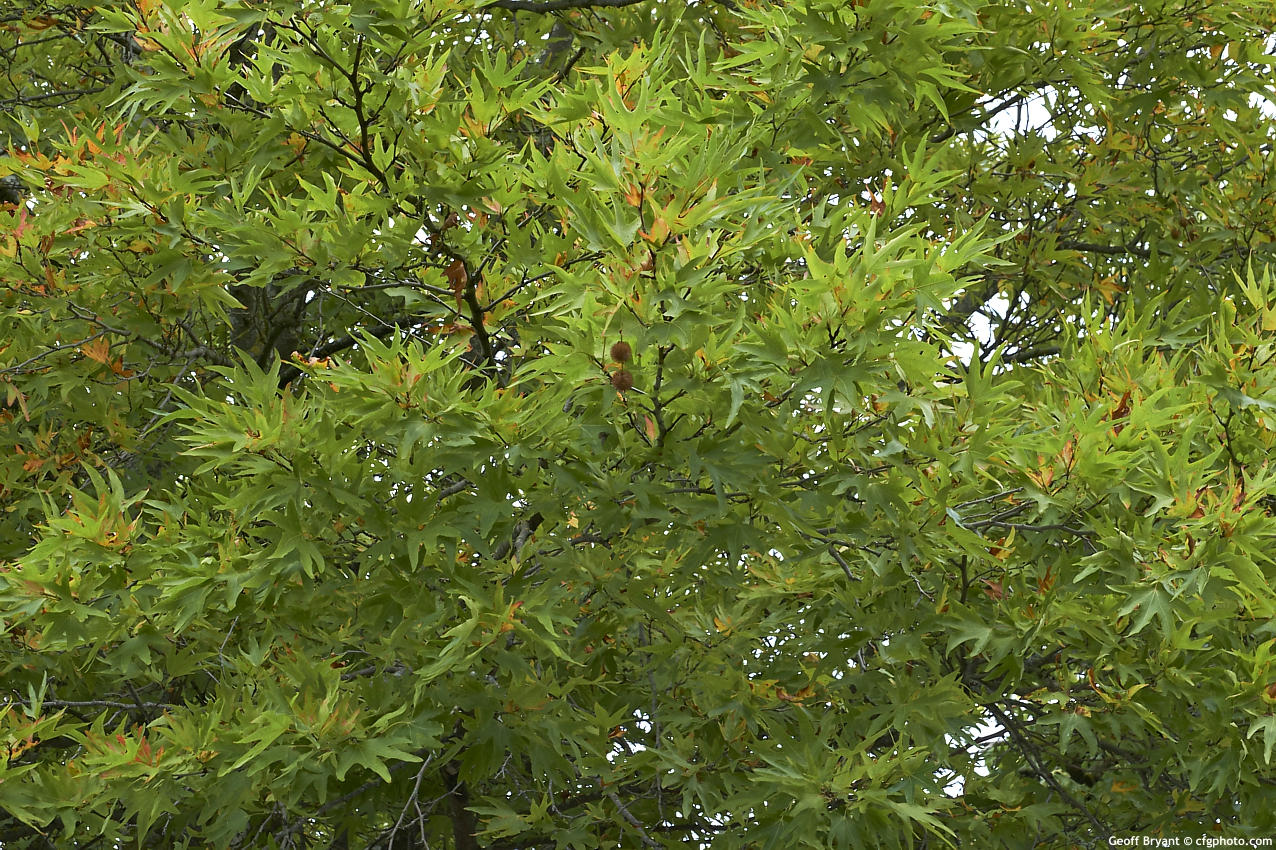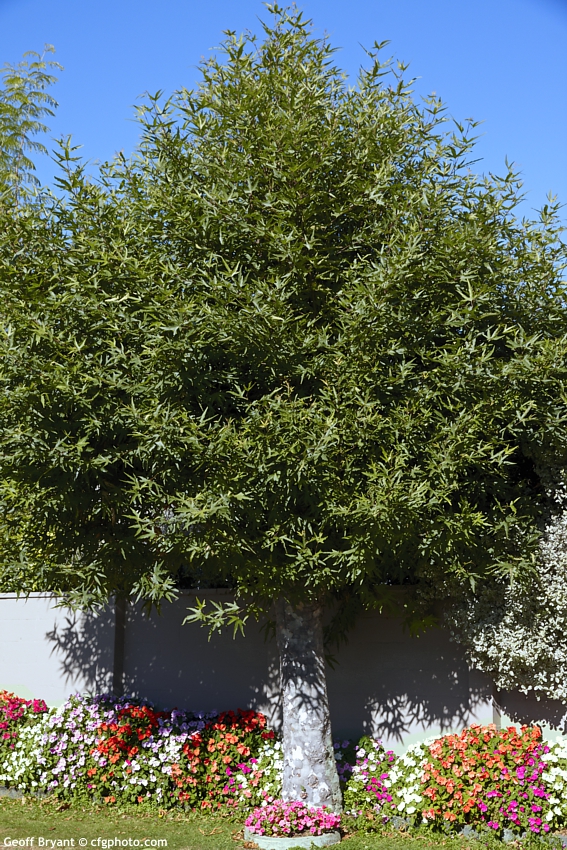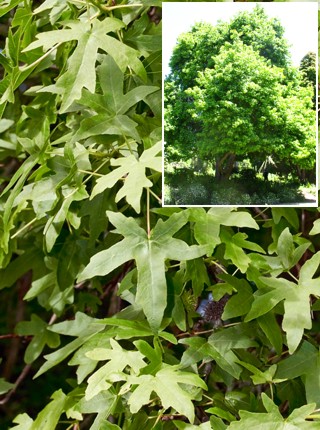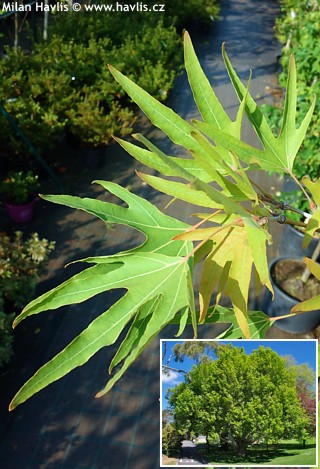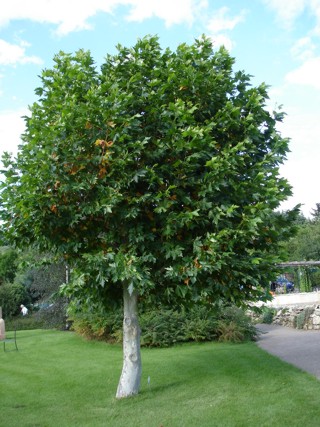Platanus orientalis 'DIGITATA' oriental plane


Platanus
Oriental plane is native to S.E.Europe where its large canopy is sought-after for a good and day-long shade. In ancient Greece Hippocrates, the father of medicine is said to have given his lectures of philosophy sitting under these magnificent trees, and students kept listening undisturbed by hot rays of sun. In other parts of the world including Northern hemisphere the plane did not become widely cultivated possibly because of its large size and resemblance to sweetgums which are much smaller and therefore more suitable for small and mid-sized gardens. In spite of its size we believe that it has features of ornamental value for which it finds its use in our climate, too.
Digitata is a naturally occurring form of oriental plane, now considered a variety. It was first described by British botanist George Henry (1806-1879) who also admitted that the tree had been put into commerce some 30 earlier by Loddiges, a significant nursery of 18th and 19th century renowned for importing and introducing new and exotic plants to Britain.
Digitata is very similar to Laciniata variety but there a few differences. Its leaves are 15-20 long and wide (Laciniata is longer), deeply lobed with conspicuous side horns at margins (Laciniata has smooth margins), medium do dark green (Laciniata is paler). They are deciduous, matte, and turn yellow, orange or even scarlet shades for a short period of time in autumn. They are covered with tiny hairs that may irritate respiratory system if worked with closer to the face and in large quantity.
Smooth trunk exhibits attractive multi-coloured pattern revealed by bark that peels off in irregularly shaped flakes on older trees. Fruits are rather small, 1-1,5 cm across, olive green, infertile, slightly prickly spheres (achenes) in hanging clusters of 2-4 that remain on the tree during the winter. The tree grows fast and well-established young trees can make half a meter per year. The canopy is upright to rounded or dome-shaped with age, casting a pleasant shade. Despite its large size it always looks delicate thanks to its dissected foliage.
It adapts to any soil type, but prefers deep, moist, siliceous soil. It tolerates air-pollution, summer dry spells as well as temporary flooding once established. Pruning should be done by end winter. In small gardens and narrow streets you can use pollarding to keep it smaller. It is a form of pruning when at the end of winter you cut back the branches right to the top of the stem, let them re-grow in spring, making long branches with extremely large leaves. Such action must be repeated annually or every couple of years. Hardiness of oriental plane is a conflicting subject when it comes to encyclopedias from all over the world. However, we have tested and proved its hardiness down to min. -25°C (USDA zone 6) without any damage and suppose it can withstand a couple of degrees lower for a few days.
Last update 02-12-2021












